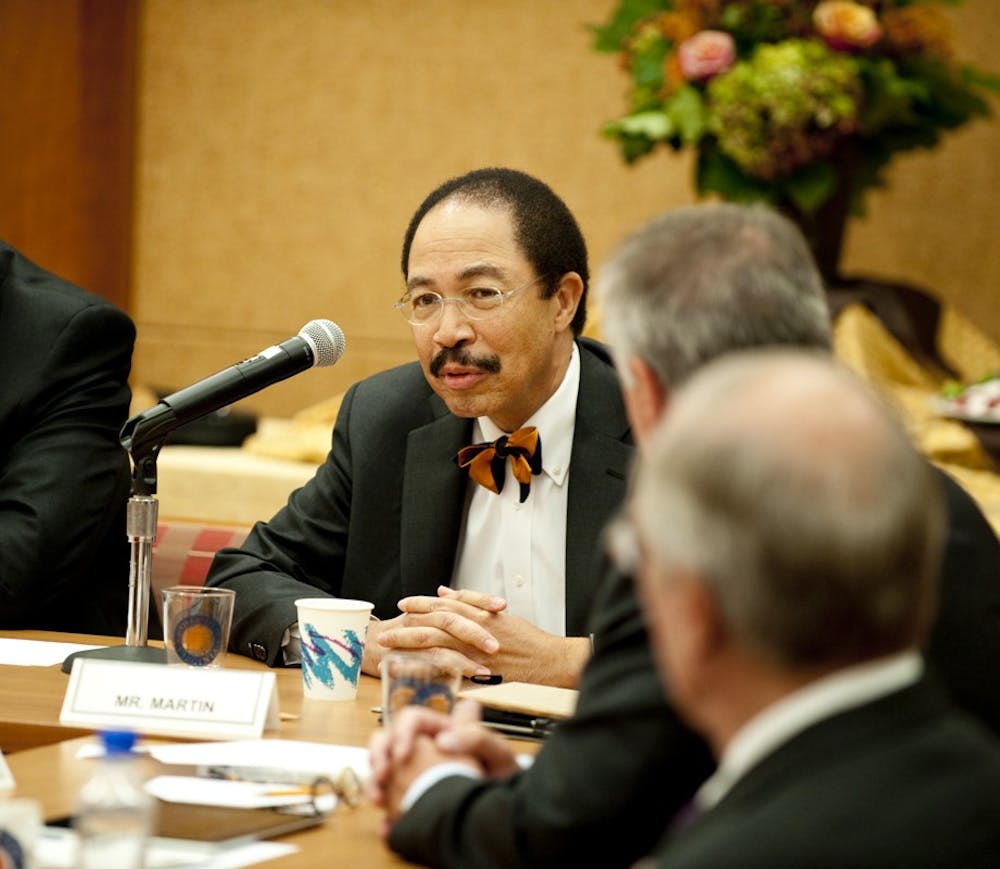The Board of Visitors voted to reauthorize a modified AccessUVa, the University’s financial aid program, on Saturday during its August retreat. The new program, which will not affect current recipients but will instead be phased into effect through the 2017-18 academic year, requires all new student aid packages to incorporate loans as a portion of the award, including those for students in the lowest income bracket.
Under the previous system, students whose families made less than 200 percent of the federal poverty line, or $47,100 in 2013 for a family of four, and had less than $75,000 in assets did not receive any loans as part of their need-based aid package.
The University launched AccessUVa in 2004 to meet 100 percent of student need. The program capped loans for all students at about 25 percent of the in-state, four-year cost of attendance. For the 2013-14 academic year, the expected cost of attendance for an undergraduate College student is $26,276.
The modified program caps loans at $28,000 across four years, and this cap applies to all students — eliminating the exemption for low-income families.
Rector George Martin, who began his term on July 1, 2013, said increased demand for financial aid due to the 2008 recession coupled with lessening federal support required changes to the program.
“The program costs have increased dramatically since it was implemented in 2004, while both the demand for financial aid by families has increased and federal support has flattened or declined,” Martin said in the press release. “The Board adopted a more balanced approach to make sure AccessUVa will be around to help future students and families for the long run.”
In 2004, 24 percent of U.Va.’s undergraduate students qualified for need-based aid. In 2013, 33 percent of students qualify for such assistance. The percentage of low-income undergraduates — those who were eligible for all-grant aid under the previous system — increased from 6.5 percent to 8.9 percent between 2004 and 2013, according to the press release.
The percentage of undergraduate students eligible for federal Pell Grants, for which the maximum award in the 2013-14 academic year is $5,645, rose from 7.8 percent to 14.2 percent between 2004 and 2013, according to the press release.
The University’s contribution to aid packages, drawn from tuition and other sources, was $40.2 million in the 2012-13 academic year, up from $11.5 million in the 2004-05 academic year.
The Board’s changes are expected to slow the increase in costs of AccessUVa by $6 million between now and the 2017-18 academic year, while still meeting 100 percent of demonstrated need, according to the press release.
The University last made major reforms to AccessUVa in November 2012 for the 2013-14 academic year. Those changes increased work-study opportunities for low-income students and reduced the predicted increase in AccessUVa costs by $4.3 million in four years, according to a Powerpoint presented to the Board at their August retreat.
Executive Vice President Pat Hogan said students currently receiving AccessUVa awards will not be affected by program changes.
“We will honor our commitment to maintain AccessUVa as [current recipients] understood the program would operate,” Hogan said in the press release. “This commitment will remain in place throughout their time as undergraduates here.”







